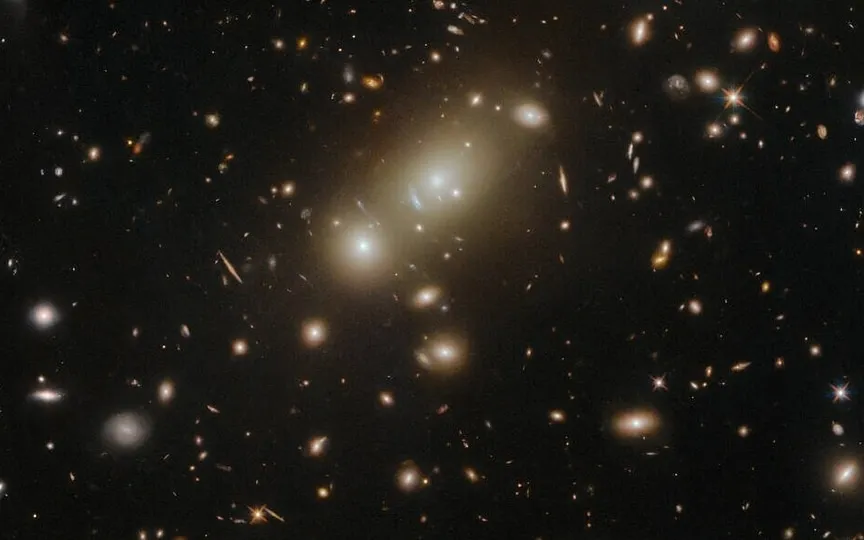Hubble Telescope Captures Image of Gigantic Celestial Object
The ability of the Hubble Space Telescope to capture captivating images of distant space and galaxies never fails to amaze. With its powerful instruments, space agencies can uncover countless enigmas that surpass our understanding. Once again, NASA’s Hubble Space Telescope has taken a picture of the immense Abell 3322 galaxy cluster, showcasing the presence of the galaxy 2MASX J05101744-4519179 in the same frame.
About Abell 3322
A cosmic cluster named Abell 3322 was captured by ESA/Hubble and NASA, according to a NASA report. The cluster is said to be 2.6 billion light-years from Earth in the constellation Pictor. In the picture we can see so much of the splendor of the universe, and the amount of light produced by each object from so far away is something we should pay attention to.
NASA also revealed the characteristics of the cluster, it said that the cluster can be called a cosmic leviathan, which appears to be very bright at X-ray wavelengths. These X-ray wavelengths can be seen with the naked eye, but instruments like the Hubble telescope are beyond human reach.
NASA further explains that “Observing galaxy clusters like Abell 3322 can advance our understanding of the evolution and interactions of dark and luminous matter in galaxy clusters.”
The image was taken by two Hubble telescope instruments called Wide Field Camera 3 and Advanced Camera. Each camera has the potential to unravel the mysteries of the night sky and help scientists gain in-depth information about each new discovery. Infrared, visible light and ultraviolet are all covered by WFC3. ACS, on the other hand, focuses on visible light and does not have extensive WFC3 coverage.
About the Hubble Space Telescope
According to a NASA report, Hubble is a space observatory that was launched in 1990 to study the universe. For years, the telescope has contributed to space exploration and revealed its mysteries in an amazing way.




